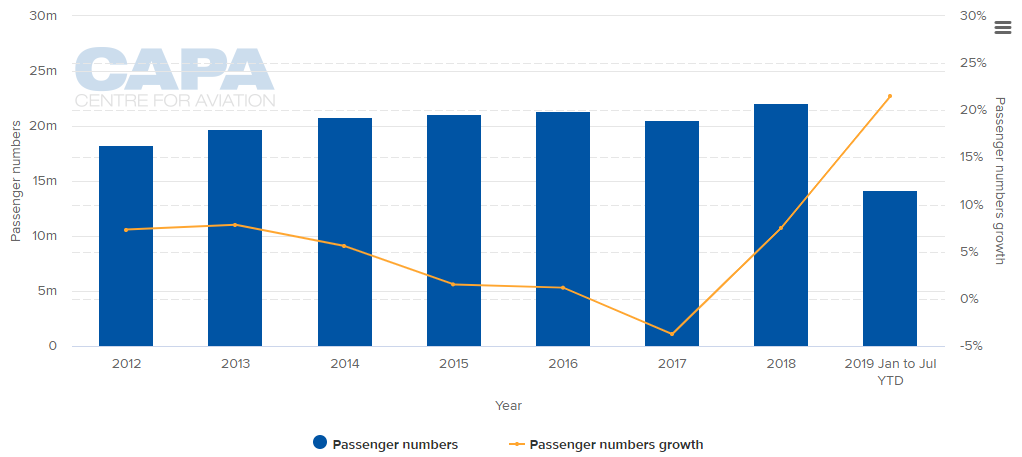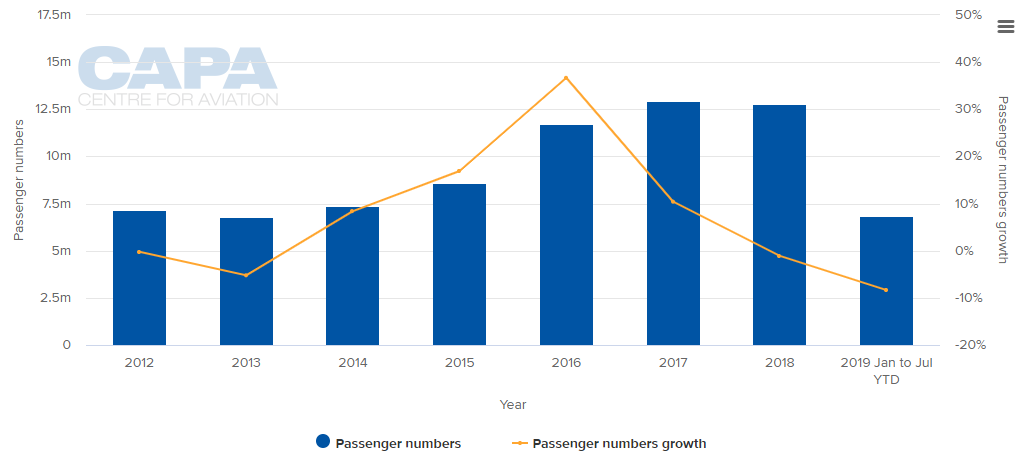FBB reports that revenue increased +5.7% year-on-year to EUR414.6 million off the back of substantial gains in parking, advertising and F&B revenue, and a nearly 17% jump in EBITDA to EUR118.7 million.
Looking ahead, while revenue is expected to increase +2.5% to EUR425 million from +2.3% passenger traffic growth and associated non aeronautical sales, the operator foresees a EUR110 million loss due to higher maintenance costs, costs for additional staff, increases in depreciation and above all investments in BER works and noise protection compensation for the new airport. This will bring FBB's accumulated deficit to over EUR1.1 billion.
Meanwhile, there is light at the end of the tunnel with regards to the opening of Berlin Brandenburg Airport (BER). The FBB supervisory board is still very confident the Oct-2020 deadline will be met and that technical issues and construction defects which have left the airport terminal hamstrung for so many years will be overcome by the end of the year.
FBB has begun terminal 1 operating principle tests, involving comprehensive technical and safety inspections conducted in conjunction with service providers and construction companies, audited by TÜV Rheinland.
Its first audit, the so called 'black building test', was successfully carried out to test emergency power supply systems on 12/13-Aug-2019. Consider that there were nearly 900 technical deficiencies related to the main terminal reported in early 2018, including emergency lighting and power generation, all of which had to be resolved for TÜV testing to take place.
This is a bigger win for FBB than it would first seem, but just over one year until the planned opening though, any discrepancies appearing now would certainly push back the deadline into 2021.
Originally scheduled to be commissioned in 2012, Berlin passenger traffic has since increased from around 25 million back then to 35.5 million forecast in 2019. The race is therefore also on to push ahead with a number of very necessary capacity building projects in 2019 and 2020 to ensure at the very least the airport can open at capacity.
CHART - Since Brandenburg's original 2012 opening date traffic in the Berlin Airports system has grown by almost half with growth at Tegel (top) and Schoenefeld (bottom) even with the collapse of prominent carrier airberlin

 Source: CAPA - Centre for Aviation and OAG
Source: CAPA - Centre for Aviation and OAG
Immediate works including completion of taxiway and apron construction works and installation of two new unwinders at the southern runway of BER to enable efficient aircraft unrolling. Both taxiways M5 and M6 are to be completed in 2019.
Works will also carry on with construction of T2, which will act as a processor building connected to the existing pier north and offer additional capacity of six million passengers per annum. Completion is scheduled at the end of 2020 when BER comes online.
A new T3 will be constructed alongside T1 by 2025/2026, adding a further 12 million annual passengers in capacity. At this point, Schoenefeld airport (known as T5 after the BER opening) will close and the airport's capacity will stand at 45 million ppa. The BER 2040 master plan forecasts capacity of 55 million ppa on its parallel runway.
ORAT procedures for the main terminal are scheduled to be carried out from spring 2020 until Oct-2020, and FBB CEO Dr Engelbert Lütke Daldrup has recently said Berlin Tegel is expected to be mostly wound up in as little as three weeks after the BER opening. It will have up to six months for the full transfer of services though.
One of BER's main concerns after opening will be dealing with the capacity restraints of an additional 22 million annual passengers on rail and bus transport into Berlin city. There are no immediate solutions to this.
The FEX (Flughafen Express) line will provide a high-speed connection from Berlin Central Station to BER via Ostkreutz but is not meant to come online until 2022. Deutsche Bahn is reportedly considering installing two new rail tracks between BER and Berlin city as part of the Dresden-Berlin high speed rail link, cutting journey times basically in half, however this will only happen from 2025.